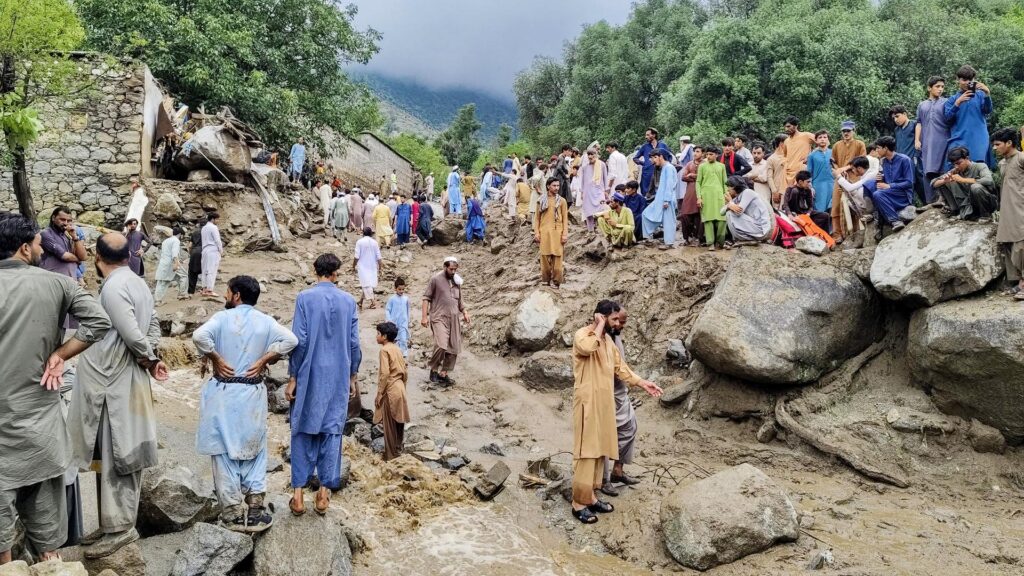Karachi Braces for Urban Flooding as Monsoon Rains Loom
Karachi, Pakistan’s bustling metropolis, is facing an ominous threat as the monsoon season approaches, raising alarm over the city’s vulnerability to widespread urban flooding. With its outdated drainage systems and rapid urbanization, the coastal city is ill-prepared for the heavy rains that typically characterize this time of year. Experts warn that the combination of heavy precipitation and inadequate infrastructure could lead to significant disruptions in daily life, damage to property, and potential health risks for residents. As authorities mobilize resources and prepare contingency plans, the looming question remains: is Karachi ready to face the deluge that could transform its streets into torrents? This article explores the factors contributing to the city’s flooding risk and the measures being taken to mitigate the impending crisis.
Impact of Urban Infrastructure Deficiencies on Karachi’s Flood Vulnerability
The inadequacies in Karachi’s urban infrastructure severely exacerbate the city’s vulnerability to flooding during monsoon rains. With a rapid increase in population and urban sprawl, essential services like drainage systems and road networks have not kept pace, leading to critical deficiencies. In areas where stormwater drainage is insufficient, rainfall can overwhelm the system, causing extensive waterlogging. The lack of proactive maintenance of these infrastructures further compounds the issue, leaving many neighborhoods susceptible to flooding for prolonged periods.
Moreover, the city’s inadequately planned development has resulted in impermeable surfaces that prevent natural water absorption. As a result, excess rainwater accumulates on streets and residential areas instead of being absorbed into the ground. This situation is aggravated by the illegal encroachment on waterways and the continuous dumping of waste into drainage channels, which block the flow of water. Key concerns surrounding these deficiencies include:
- Inadequate drainage capacity – Existing systems are often overwhelmed during heavy rains.
- Poor urban planning – Rapid development has led to insufficient consideration of natural water courses.
- Environmental degradation – Pollution and waste management issues worsen flooding outcomes.
- Economic impact – Flooding disrupts businesses and contributes to increased poverty in vulnerable communities.
Assessment of Climate Change Effects on Rainfall Patterns in Karachi
The urban landscape of Karachi is increasingly vulnerable to unexpected climatic shifts, which significantly alter the city’s rainfall patterns. Recent studies indicate that rainfall intensity and frequency have escalated, resulting in exacerbated urban flooding risks. This sudden surge in rainfall is primarily attributed to climate change, influencing atmospheric dynamics and causing erratic weather patterns. The implications for Karachi’s infrastructure are severe, with urban drainage systems, designed for historical weather norms, now struggling to cope with intense downpours that unleash water in unprecedented volumes.
In light of this situation, it is crucial to consider various impacts on both the environment and urban life. Factors contributing to the challenges include:
- Increased Rainfall Volume: An uptick in the amount of rain during monsoon seasons.
- Urbanization: Rapid city expansion leading to inadequate drainage solutions.
- Excessive Heat: Higher temperatures contributing to stronger storm systems.
Addressing these multifaceted issues demands strategic investment in resilient infrastructure and community preparedness initiatives. A comprehensive assessment of rainfall data, alongside infrastructural capacity analyses, can guide the development of effective management strategies tailored for Karachi’s unique climatic and geographical conditions.
Strategies for Mitigating Urban Flooding: Solutions for Resilient City Planning
As urban areas like Karachi grapple with the increasing threat of flooding, several strategies can be employed to enhance resilience against heavy rainfall and rising water levels. Implementing green infrastructure is one such solution, which includes the creation of parks, green roofs, and permeable pavements that absorb rainwater. Furthermore, improving drainage systems is crucial; cities should invest in upgrading existing infrastructures, such as stormwater drains, to facilitate better water flow and reduce the risk of overflow during intense storms. Additionally, increasing public awareness and community engagement in flood preparedness can foster a culture of resilience among residents.
Moreover, urban planners should consider the integration of zoning regulations that restrict construction in flood-prone areas, thus minimizing potential damages. Comprehensive flood risk assessments can inform urban design strategies, ensuring that new developments are equipped to manage excess water. Moreover, enhancing collaboration between government agencies, engineers, and local communities can lead to innovative solutions tailored to the unique challenges posed by urban flooding. The following table summarizes some effective techniques for managing urban flood risks:
| Technique | Description |
|---|---|
| Rain Gardens | Designed to absorb rainwater, reducing runoff. |
| Floodplain Restoration | Rehabilitating natural floodplains to improve water absorption. |
| Stormwater Management Plans | Comprehensive strategies to control water flow and quality. |
| Community Training Programs | Empowering citizens with knowledge related to flood preparedness. |
Wrapping Up
As Karachi braces for the impending rains, the threat of urban flooding looms large over the city, raising concerns among residents and authorities alike. The combination of inadequate drainage systems and rapid urbanization exacerbates the risk, highlighting the urgent need for comprehensive planning and infrastructure improvements. With the monsoon season approaching, local governments must prioritize effective flood management strategies to safeguard the lives and livelihoods of millions. As Karachi continues to grapple with these challenges, the call for sustainable solutions has never been more pressing. The resilience of the city and its inhabitants will be tested in the days to come, underscoring the importance of proactive measures to mitigate the impacts of climate change and ensure a safer future for all.
